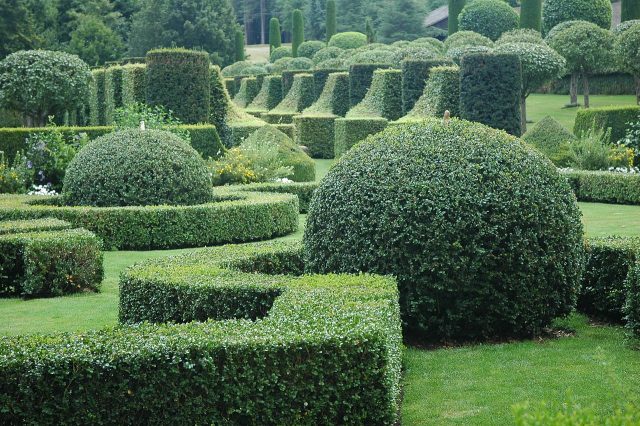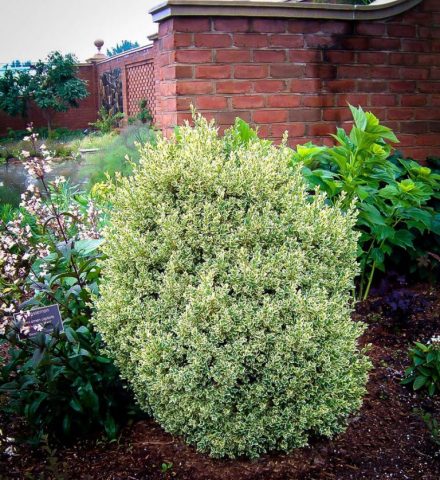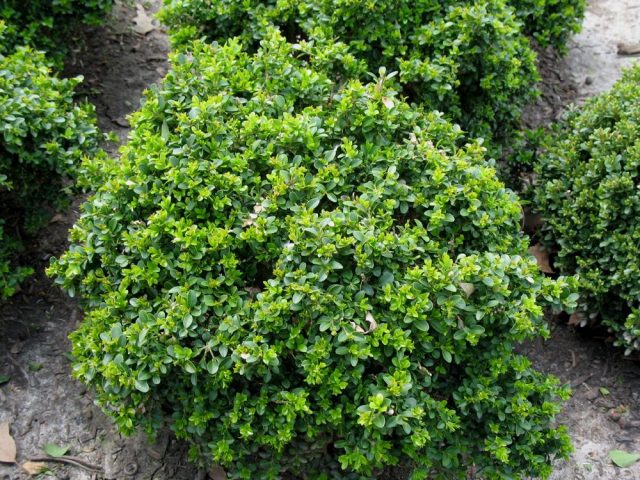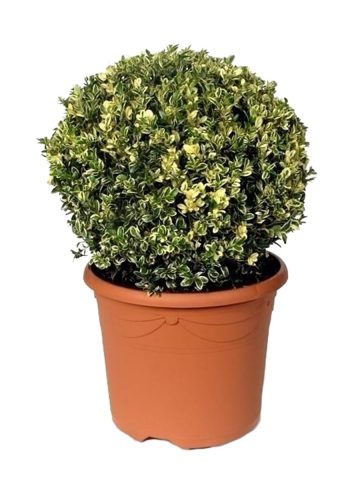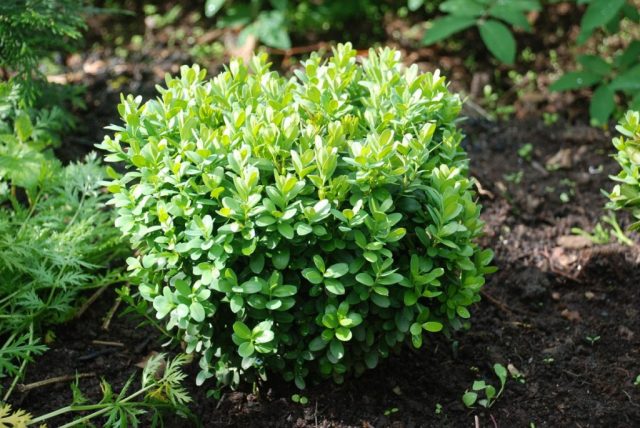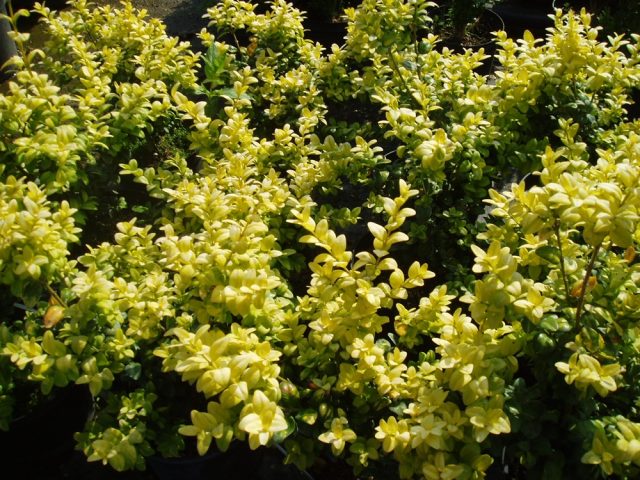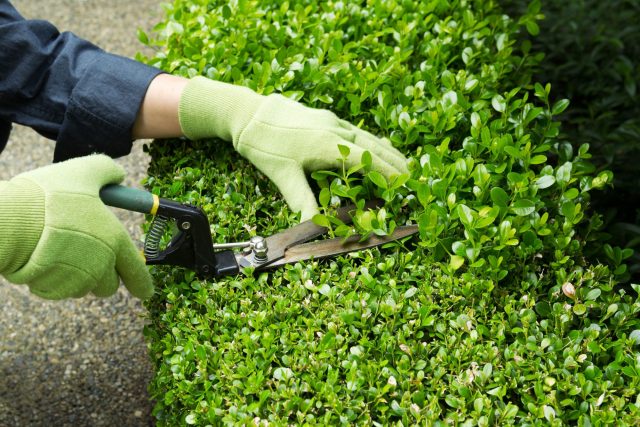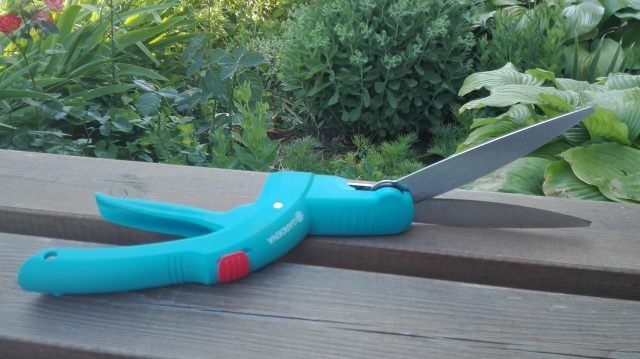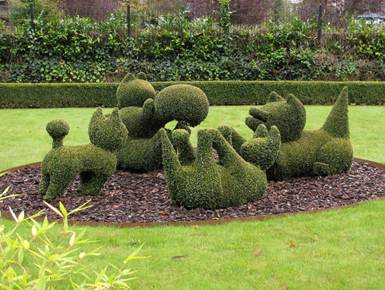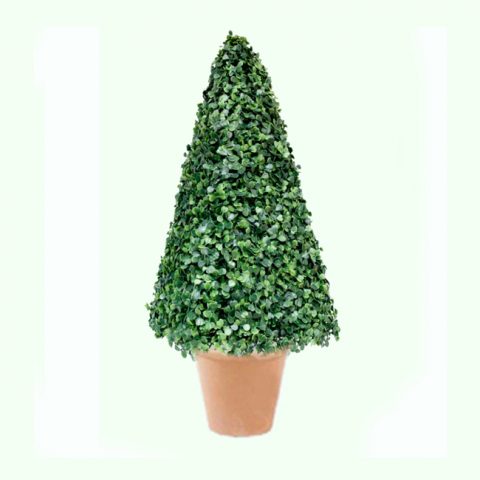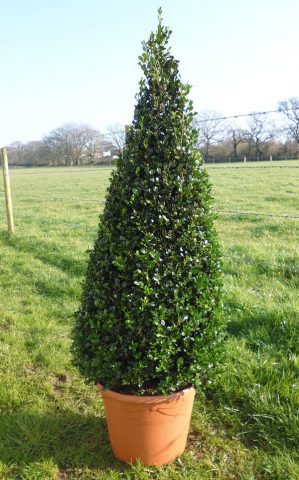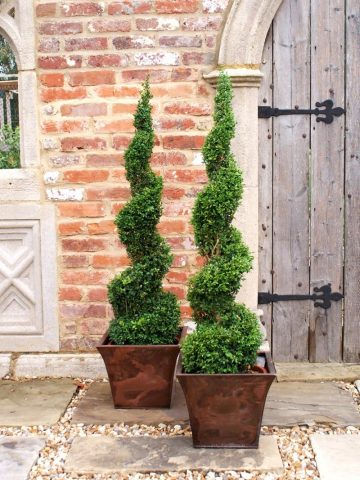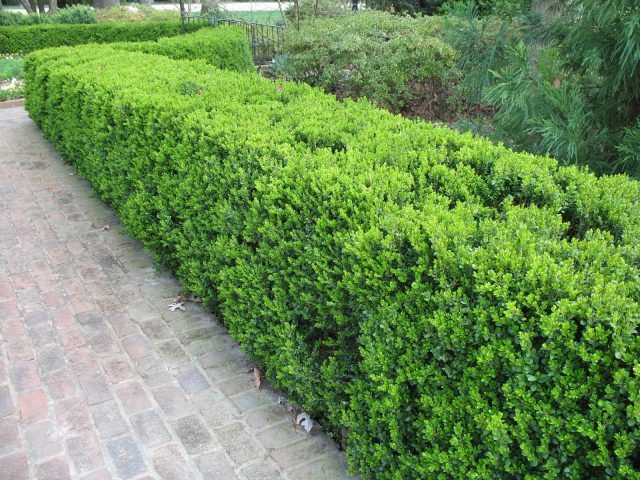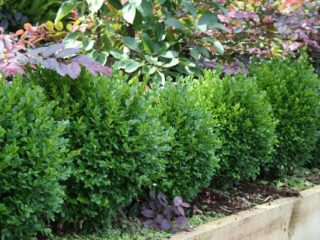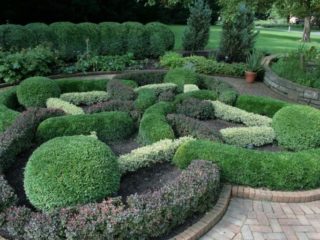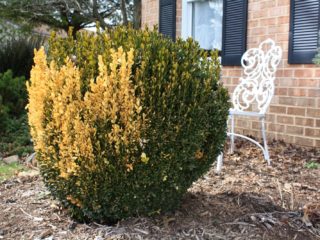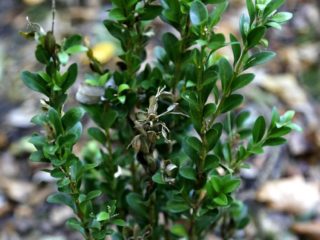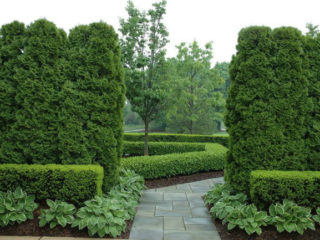Content
The Latin name for this plant is buxus. Boxwood is an evergreen shrub or tree. They grow relatively slowly. The height of the plants varies from 2 to 12 m. These shrubs are valued for their beauty and unpretentiousness, but boxwood should be pruned regularly. In nature, they grow in different places: in rocky gorges and deciduous forests. Boxwood can be found in Southern Europe, Africa, Asia, and Central America.
Since ancient times, the wood of the buxus has been highly valued; it has been used to make chess pieces, musical instruments, smoking pipes and much more. Boxwood and landscape designers appreciated. Specially bred weeping and dwarf species can turn any garden into a fabulous corner. But this requires regular pruning.
On the video you can watch a curly haircut of a boxwood:
Boxwood in landscape design
With proper care, a shrub can live for about 500 years. Its compact, rounded crown will become pliable clay in the hands of both the professional and the novice gardener. Different types of boxwood have their own decorative value.
All varieties respond well to pruning. By correctly cutting the branches, you can form the correct geometric shapes from the crown: a pyramid, a ball, a cone and others. Boxwood can be given absolutely any shape. From low-growing species, borders and original parterres can be created, they are also used to frame flower beds. Any flower arrangements against a sheared boxwood background will look advantageous.
Buxus is often used as a background for other plants. It has a beautiful and deep leaf color. This noble shrub is ideally combined with buldenezh, barberry, roses, geyheira, lilacs. In order to achieve original contrast, it is best to select flowering plants with brightly colored petals.
The most popular varieties of boxwood include:
- Aureovariegata. It has elongated ovoid leaves that change color: over time, a green tint is mixed with yellow. The bushes of this boxwood are resistant to drought and frost, and can grow in some shade.
- Compacta. Plant with a dense dense crown, consisting of small oval leaves. This box tree reaches a height of 80 cm. Suitable for creating low hedges, as well as for growing in tubs.
- Marginata. Differs in beautiful oblong leaves. Each has a delicate pistachio border. The boxwood of this variety grows with a height of 2 to 4 m.
- Curly Locks. Curiously curved stems and leaves give this variety of boxwood a special decorative effect. A great option for a path or flower bed.
- Latifoliamaculata. The maximum height is 1.5 m. The leaves of this boxwood are similar to chameleons: the young have a golden hue, and the lower ones, as they mature, acquire more saturated green tones.
When to cut boxwood
You can only prune boxwood at home after two years. During this time, the bush will have time to completely take root and get stronger.If a low-growing boxwood (about 25-30 cm) was planted in the form of a border, then a small pruning can be done in a couple of weeks, carefully removing the top, but no more than 5-10 cm.
In the southern regions, the first pruning can begin in April. If the climate is not too favorable, it is worth waiting for a stable warmth and postponing the procedure to May. Boxwood is a slow-growing shrub. In most cases, a small corrective trimming of the new growth is sufficient. Only heavily neglected and shapeless branches are cut to old wood. After a month, you will again need to prune the protruding branches.
Decorative pruning of boxwood is carried out in spring, summer and autumn. For this, they usually choose the evening of a cloudy day. Under the influence of the sun, burns appear on the leaves. But young plants, that is, with a sparse crown, are not afraid even of the summer heat.
Pruning boxwood in spring
Shearing boxwood in the spring is carried out before the start of active growth. Start trimming from the top, gradually moving downward. Small branches are cut on top, they should not disturb the harmonious shape of the bush. As for the large branches of boxwood, they are pruned so that they cannot grow young shoots inside the shrub. This makes the buxus untidy.
Regular pruning of bushes is the key to their lush and beautiful crown. After that, the plants should be given more attention by regularly watering and feeding them.
Pruning boxwood in the fall
By the middle of summer, the growth of boxwood stops. However, the movement of juices inside the shoots does not completely stop. Therefore, the active phase of growth will resume. Cutting boxwood in autumn falls on the end of October or the first days of November. At this time, two periods of growth have already passed, but serious frosts have not yet arrived. Now you need to prune young shoots to stimulate their growth next spring. It is enough to remove only 2 cm.
After that, the boxwood is prepared for winter. Mulch is replaced first. The summer version (leaves + grass) will start to rot quickly. If the bush is not a standard bush, rotting will quickly spread to branches and leaves. Spruce branches and peat will help protect the roots from the cold. The winter sun is a threat to the crown.
Under its rays, shoots resume growth. In this case, the roots remain in the cold ground and do not deliver nutrients to the leaves. Gradually, they begin to fade. The buxus is covered with a breathable dark material - a piece of cloth or burlap.
Boxwood scissors
To trim the shrub, you will need different tools, each of which has its own purpose. The final choice of inventory depends on how dense the branches are, as well as on their location: at the top, on the outside or inside the bush.
There are several types of cropping tools:
- Cordless brush cutter. Indispensable for the formation of a hedge. The tool is lightweight and easy to operate. With its help, the crown can only be given a rectangular shape.
- Scissors for pruning bushes. The extended steel handles have plastic or nylon inserts for added comfort. With short, sharp blades, bushes can be shaped into different shapes. It is quite convenient to carry out pruning with them.
- Cordless garden shears. They are designed for pruning hard boxwood branches. In this tool, several pairs of scissors are simultaneously combined, which are driven by a battery.
- Sheep shears. They cut soft twigs near the boxwood, which did not have time to stiffen. Also, with their help, it is easy to correct the contours of the crown. The tool is made from a single piece of metal, and the handle is shaped like a heart.
- Pruner. With its help, overgrown bushes are thinned, they are pruned not too thick branches and shoots.The design has two blades: one is a supporting one and the other is a working one. They are bent in a semicircle. With the help of a pruner, hedges, bushes and curbs are formed.
How to cut boxwood
Frequent trimming of the bucket requires an increase in the amount of fertilizing and watering. This will allow the plant to replenish lost nutrients faster. Otherwise, the boxwood will begin to lose foliage.
How to trim boxwood with a ball
The easiest way is to use a homemade or purchased blank. It consists of a rod and a wire semicircle. You just need to choose the right radius. It is more difficult to form a bush "by eye". First you need to trim, giving the shape of a cube, and then cut off the tops, turning the crown into a semicircle.
Another option for the formation of a boxwood on a trunk is to trim the side shoots at the base, focusing on the future rounding from the bottom, and then round off the top and sides until the crown acquires the desired shape.
Boxwood curly haircut
The main rule of such pruning is that the work must be carried out from the inside out, from top to bottom. The crown is trimmed evenly, in stages and in small parts. You cannot cut a large fragment in one area; when creating a shape, it is imperative to observe the proportions.
Boxwood figures:
- Cube To form this shape, you will need one or more bushes with a dense crown and dense branches. The whole composition should look organic. To get cubic boxwoods, you need to plant one plant in the center, and place the rest next to a square. With the help of wooden slats, it is necessary to make the frame of the future cube and trim it along it.
- Pyramid. Draw a circle or square around the bush. Along the perimeter, slats are immersed in the ground, which must be fastened at the top with a rope. On this blank, a shearing of a boxwood in the form of a pyramid is carried out.
- Cone. The principle is roughly the same. The slats are fastened with a rope and the branches are cut strictly along them, moving from bottom to top.
- Spiral. First, make a cone or pyramid. Then the bush is wrapped with colored tape. It simulates a future spiral. You need to decide in advance on the number of turns and the distance between them. Pruning branches with pruning shears is carried out strictly along the contour of the tape.
How to form a boxwood hedge
Young bushes are initially trimmed in the same way. The starting height is 15 cm from the ground. Further, when the shoots grow - to a height of 20 cm and so on. The crown will turn out to be thick and quite branched. In such a hedge there will be no voids and gaps, bare lower branches and too dense tops. Such combinations do not look aesthetically pleasing. For one summer season, you need to carry out at least 3-4 such trims. Then the annual growth of the bush will be from 15 to 20 cm. The last pruning is carried out in the last days of August. This will enable young shoots to ripen before the cold weather.
Features of the formation of boxwood
Young plants require frequent pruning. This stimulates the growth of new shoots, the bush becomes more branched and thick. On the other hand, the higher the density of the bush, the more difficult it is for the sun's rays to break through to the center. The inner branches remain bare.
When pruning a bush, it is gradually narrowed from the base to the top. So all the branches will be evenly illuminated by the sun. Dead or diseased branches should not be radically cut off immediately. It is better to divide the procedure into several stages so as not to destroy the plant.
A special mesh will help to create beautiful and perfectly even borders. It is put on over the bushes and only those shoots that stick out through it are removed.
Boxwood leaves and twigs contain toxic alkaloids. Any manipulations with the plant should be carried out only with thick gloves.
Conclusion
Pruning boxwood beautifully is a real art. You can entrust the care of the garden to a professional or take the initiative into your own hands. Gradually, you can learn all the intricacies of decorative trimming. This is a very exciting experience. From an ordinary bush, real living sculptures and labyrinths are obtained.In combination with beautiful and original street lights and various flowering shrubs, an ordinary garden will turn into a unique park with its own unique atmosphere.
